The Tuol Sleng Genocide Museum, located in the heart of Phnom Penh, Cambodia, is one of the most poignant and harrowing reminders of the atrocities committed during the Khmer Rouge regime. This former high school turned prison, known as Security Prison 21 (S-21), is a must-visit for anyone seeking to understand Cambodia’s tragic past. In this comprehensive guide, we’ll explore the history of the museum, its significance, and provide practical tips for visitors. Whether you’re a history enthusiast or an adventurous traveler, this article will help you navigate your visit to the Tuol Sleng Genocide Museum.
The History of Tuol Sleng Genocide Museum
From School to Prison: The Transformation of S-21
Before the Khmer Rouge came to power in 1975, the site of the Tuol Sleng Genocide Museum was a high school named Tuol Svay Prey. However, under the regime of Pol Pot, the school was transformed into Security Prison 21 (S-21), one of the most notorious prisons in Cambodia. The Khmer Rouge, led by Pol Pot, sought to create an agrarian utopia, but their radical policies led to the deaths of an estimated 1.7 million people through execution, forced labor, and starvation.
The Horrors of S-21
Between 1975 and 1979, an estimated 17,000 to 20,000 people were imprisoned at S-21. The prisoners included men, women, and children, many of whom were intellectuals, professionals, and even Khmer Rouge members accused of treason. The conditions were brutal: prisoners were tortured, forced to confess to crimes they did not commit, and eventually executed. Only seven survivors are known to have made it out alive.
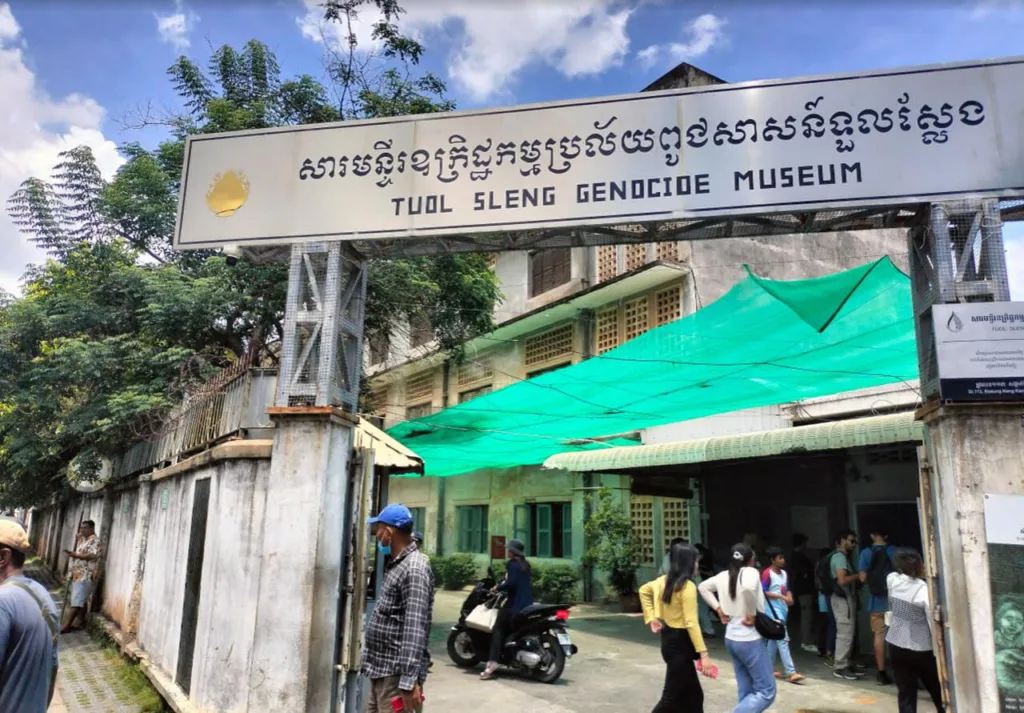
The Museum’s Establishment
After the fall of the Khmer Rouge in 1979, the prison was converted into the Tuol Sleng Genocide Museum to preserve the memory of the victims and educate future generations about the horrors of the regime. Today, the museum stands as a stark reminder of the consequences of totalitarianism and the resilience of the Cambodian people.
What to Expect When Visiting the Tuol Sleng Genocide Museum
The Layout of the Museum
The museum is divided into four main buildings, each with its own significance:
- Building A: Former classrooms converted into prison cells. The walls are lined with photographs of victims, a haunting reminder of the lives lost.
- Building B: Exhibits include torture devices, prisoner confessions, and personal artifacts.
- Building C: The original prison cells, where prisoners were held in cramped conditions.
- Building D: A memorial stupa containing the skulls and bones of victims, serving as a solemn tribute to those who perished.
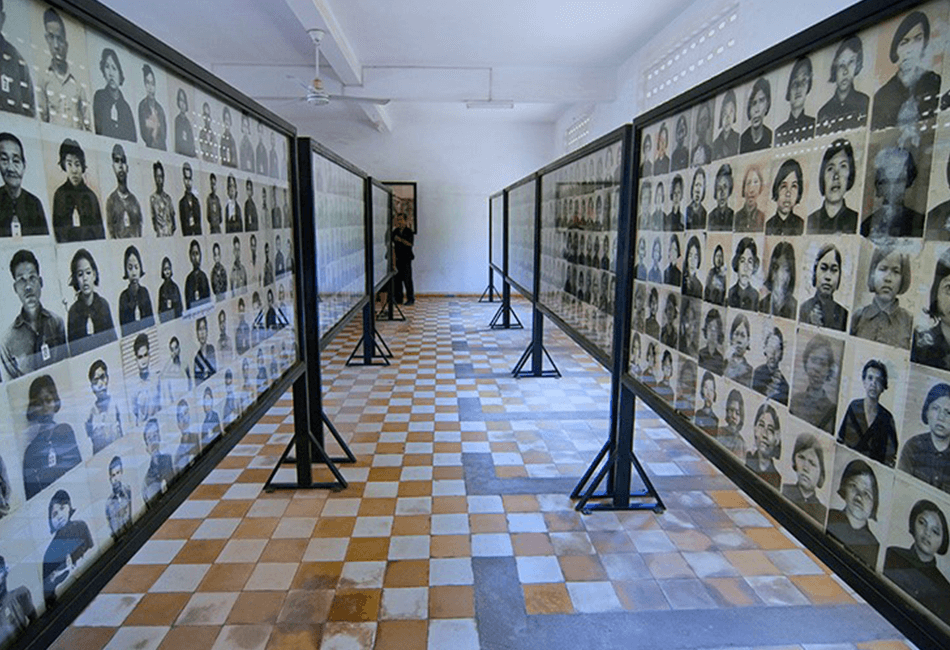
Tuol Sleng Genocide Museum and Killing Field Tour
- Duration: 4 Hours
- Destination: Phnom Penh
- Group Size: 2-12 People
$53
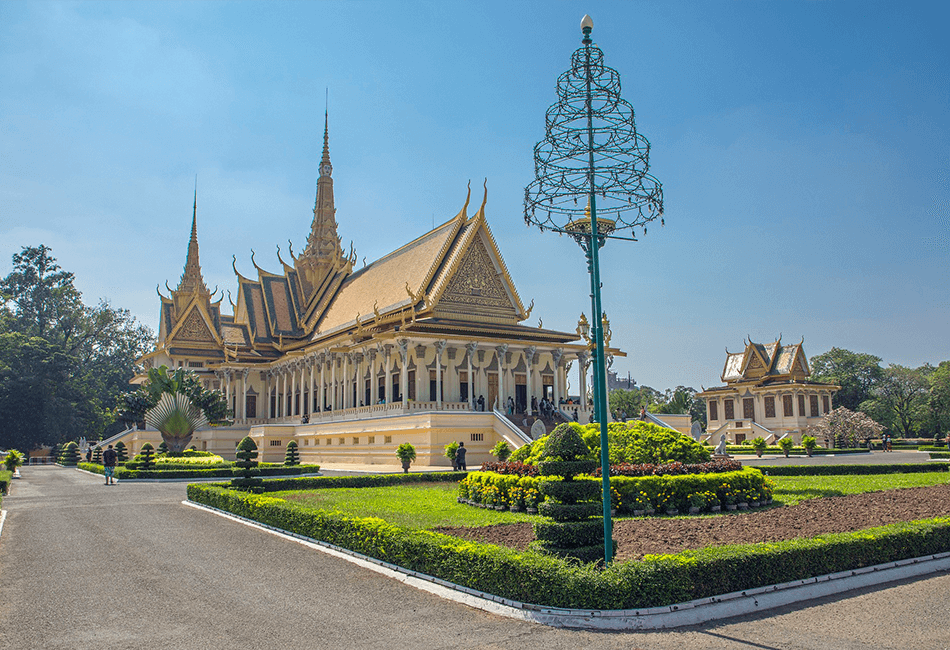
Phnom Penh Secrets Full-Day Tour
- Duration: 8 Hours
- Destination: Phnom Penh
- Group Size: 2-12 People
$110
Key Exhibits
- Photographs of Victims: The museum houses thousands of photographs taken by the Khmer Rouge to document their prisoners. These images are a powerful testament to the human cost of the regime.
- Torture Devices: Tools used to extract confessions are on display, offering a chilling glimpse into the methods employed by the Khmer Rouge.
- Survivor Stories: The museum features testimonies from the few survivors of S-21, providing a personal perspective on the atrocities.
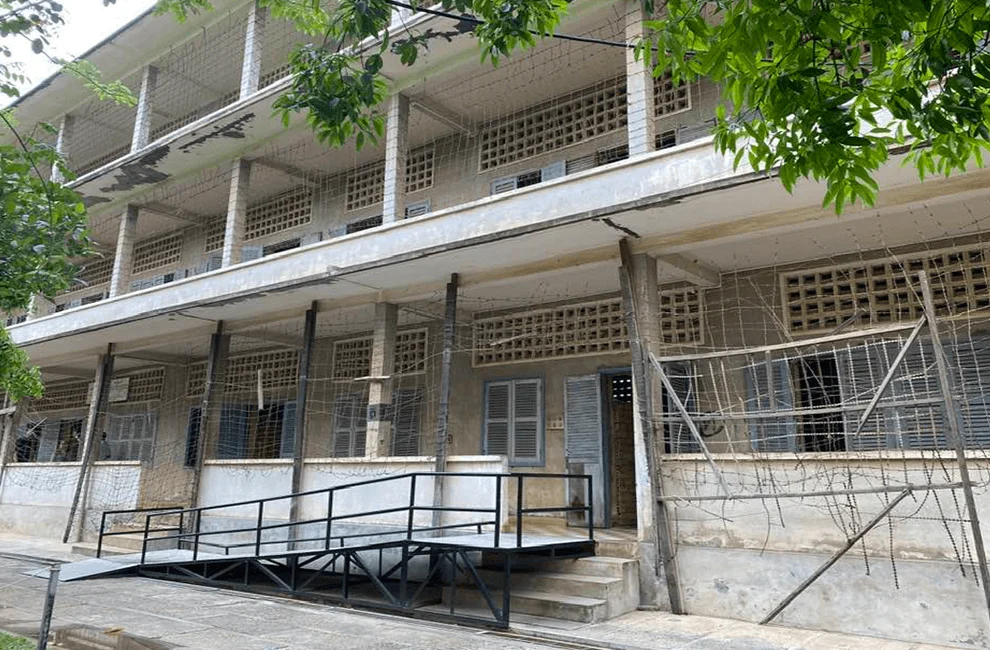
The Emotional Impact
Visiting the Tuol Sleng Genocide Museum can be an emotionally overwhelming experience. The exhibits are graphic and unflinching, but they serve an important purpose: to ensure that the world never forgets the crimes committed during the Khmer Rouge era.
A Guide to Exploring the Tuol Sleng Genocide Museum
Planning Your Visit
- Location: The museum is located in central Phnom Penh, at the corner of Street 113 and Street 350.
- Opening Hours: The museum is open daily from 8:00 AM to 5:00 PM.
- Admission Fee: The entrance fee is $5 USD, which includes access to an audio guide available in multiple languages.
- Guided Tours: For a deeper understanding, consider hiring a local guide or joining a guided tour. Many guides are survivors or have personal connections to the events.
Tips for Visitors
- Dress Respectfully: As a site of immense historical and cultural significance, visitors should dress modestly.
- Prepare Emotionally: The museum’s exhibits are graphic and can be distressing. Take breaks if needed.
- Bring Water and Sunscreen: The museum is mostly outdoors, so be prepared for the heat.
- Respect the Space: Refrain from taking selfies or behaving inappropriately. This is a place of remembrance and reflection.
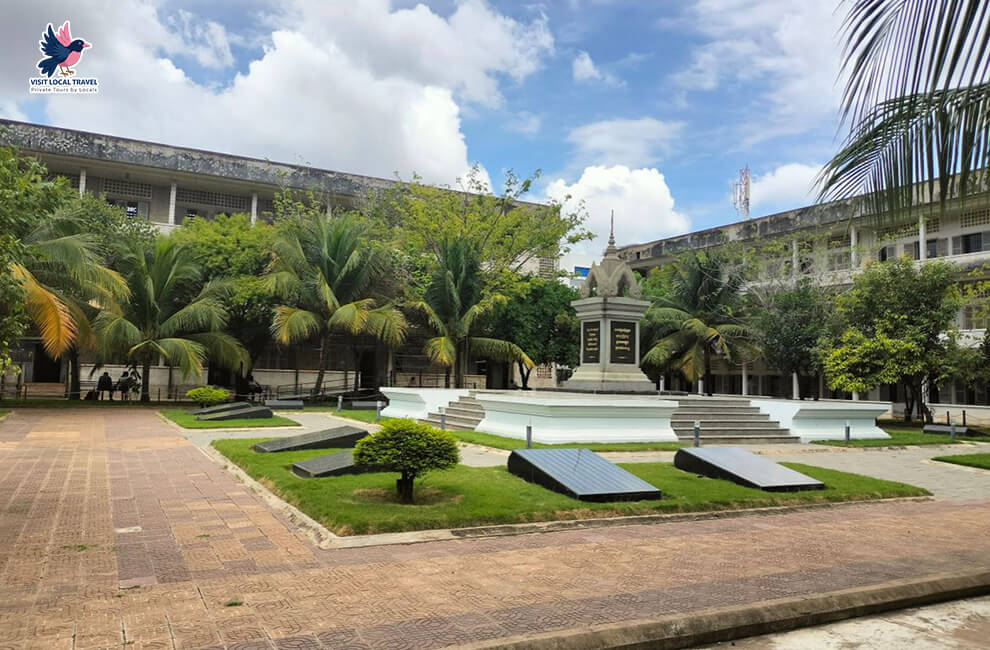
Combining Your Visit with Other Historical Sites
To gain a fuller understanding of Cambodia’s history, consider visiting the Choeung Ek Killing Fields, located about 13 kilometers from Phnom Penh. This site is where many of the prisoners from S-21 were executed. Many tours combine visits to both sites.
Why the Tuol Sleng Genocide Museum Matters
A Lesson in History
The Tuol Sleng Genocide Museum is more than just a tourist attraction; it is a vital educational resource. By preserving the memory of the victims, the museum ensures that the atrocities of the Khmer Rouge are not forgotten. It serves as a stark reminder of the dangers of totalitarianism and the importance of human rights.
A Symbol of Resilience
Despite the horrors of its past, Cambodia has shown remarkable resilience. The museum is a testament to the strength and determination of the Cambodian people to rebuild and move forward.
A Call to Action
Visiting the museum is not just about understanding the past; it’s also about reflecting on the present and future. The lessons of the Khmer Rouge era are still relevant today, as the world continues to grapple with issues of genocide, oppression, and human rights abuses.
Adventure Beyond the Museum: Exploring Phnom Penh
While the Tuol Sleng Genocide Museum is a must-visit, Phnom Penh offers a wealth of other attractions for adventurous travelers:
- Royal Palace and Silver Pagoda: Explore the opulent residence of Cambodia’s royal family.
- National Museum of Cambodia: Discover the rich history and culture of Cambodia through its extensive collection of artifacts.
- Russian Market: Shop for souvenirs, handicrafts, and local delicacies.
- Mekong River Cruise: Take a relaxing boat ride along the iconic Mekong River.
FAQs About Tuol Sleng Genocide Museum
What is the Tuol Sleng Genocide Museum?
The Tuol Sleng Genocide Museum is a former high school that was converted into Security Prison 21 (S-21) by the Khmer Rouge regime. It now serves as a museum to commemorate the victims of the genocide that occurred in Cambodia between 1975 and 1979.
When was Tuol Sleng used as a prison?
Tuol Sleng was used as a prison from 1975 to 1979, during the rule of the Khmer Rouge. It was one of the most notorious prisons in Cambodia, where thousands of people were detained, tortured, and executed.
How many people were imprisoned at Tuol Sleng?
It is estimated that around 20,000 people were imprisoned at Tuol Sleng. Only a handful of survivors are known to have made it out alive.
Who were the prisoners at Tuol Sleng?
The prisoners included intellectuals, professionals, former government officials, and even Khmer Rouge members accused of treason. Many were falsely accused of being enemies of the regime.
What happened to the prisoners at Tuol Sleng?
Prisoners were subjected to brutal torture to extract confessions, often fabricated, before being executed at the Killing Fields of Choeung Ek, located about 13 kilometers from Phnom Penh.
Who ran Tuol Sleng?
Tuol Sleng was run by the Khmer Rouge, specifically under the command of Kaing Guek Eav, also known as Comrade Duch. He was later tried and convicted for crimes against humanity.
What can visitors see at the Tuol Sleng Genocide Museum today?
Visitors can see the preserved prison cells, torture instruments, photographs of victims, and historical exhibits documenting the atrocities committed during the Khmer Rouge regime.
Why is Tuol Sleng an important historical site?
Tuol Sleng is a stark reminder of the horrors of the Khmer Rouge regime and serves as a memorial to the victims of the Cambodian genocide. It educates future generations about the dangers of totalitarianism and human rights abuses.
How does the museum contribute to healing and remembrance?
The museum provides a space for survivors and their families to remember and honor the victims. It also educates visitors about Cambodia’s history, promoting awareness and preventing such atrocities from happening again.
What is the significance of the photographs displayed at Tuol Sleng?
The photographs are haunting records of the prisoners taken by the Khmer Rouge upon their arrival. They serve as powerful evidence of the regime’s brutality and humanize the victims, ensuring they are not forgotten.
Final Thoughts
The Tuol Sleng Genocide Museum is a powerful and moving experience that offers a glimpse into one of the darkest chapters of human history. While the visit may be emotionally challenging, it is an essential part of understanding Cambodia’s past and present. By exploring this museum, you not only honor the memory of the victims but also contribute to the preservation of their stories for future generations.
Whether you’re a history buff, a curious traveler, or someone seeking a deeper understanding of the world, the Tuol Sleng Genocide Museum is a destination that will leave a lasting impact. Plan your visit today and take the first step on a journey through Cambodia’s complex and compelling history.





